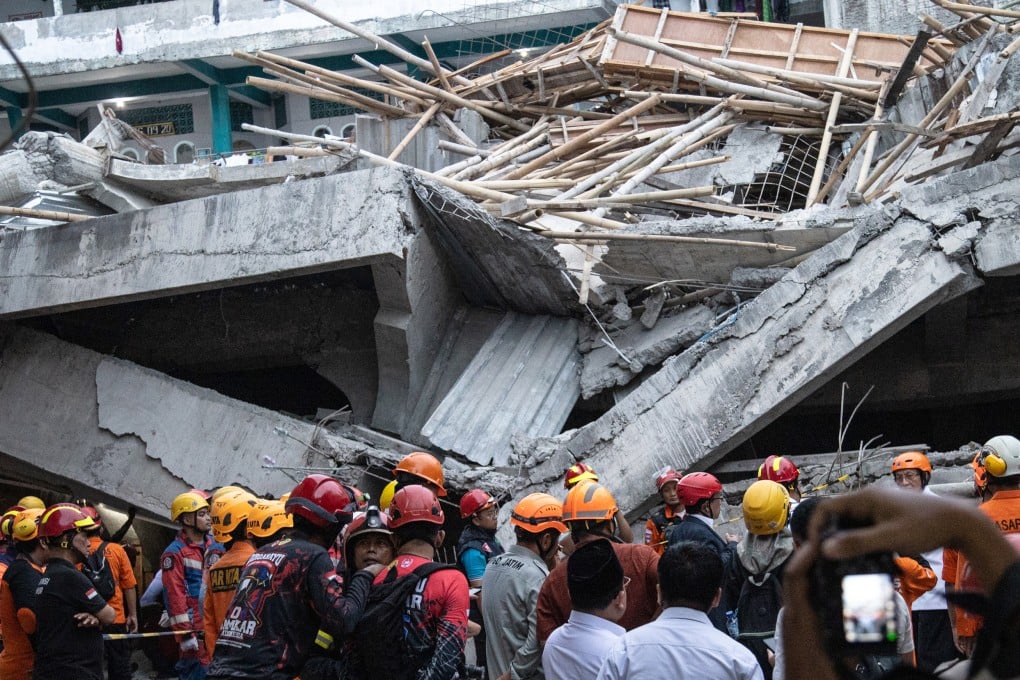
DiYES International School – School collapses in Indonesia have become a glaring sign of the country’s building safety crisis. The recent tragedy at the Al-Khoziny Islamic boarding school in East Java’s Sidoarjo district has left dozens dead and many more missing. During afternoon prayers, the structure gave way with over 100 students gathered inside. Emergency services estimated nearly 60 students remained buried, with hopes fading after the critical 72-hour rescue window passed. Families granted permission for heavy machinery to begin recovery, and officials acknowledged the rising death toll. The incident, which involved a structural failure with no external triggers like earthquakes, drew attention to Indonesia’s weak building enforcement. Initial findings pointed to concrete weight as the primary cause. The collapse sparked renewed questions about whether community-run schools adhere to safety protocols. In response, experts and disaster agencies stressed the need for robust enforcement of construction standards, especially in institutions housing vulnerable populations.
School officials never applied for the mandatory Izin Mendirikan Bangunan or IMB permit before building the third-floor extension. The structure collapsed while concrete was being poured, exposing fundamental design flaws. Local authorities admitted there were no construction papers on file. This practice of building first and seeking approval later is not uncommon, especially among religious institutions and small-scale educational centers. The collapse of Al-Khoziny school has reignited discussions about why permits remain optional in some regions. Experts said this tragedy showed what happens when buildings lack technical oversight. Investigations revealed that structural columns failed under fresh concrete load. With no professional engineers supervising the build, the entire structure gave way, leaving children trapped beneath rubble. Officials described the incident as a stark reminder that ignoring legal safety procedures carries devastating consequences. Survivors and families continue to demand accountability from school leaders and regional authorities responsible for construction monitoring.
“Read about: The Polio Vaccine Was a Miracle, But Are We Forgetting Its Life-Saving Impact?”
Indonesia’s dual-building ecosystem enables safe structures in cities but risky ones in rural settings. Permits and safety regulations are strictly enforced in urban areas like Jakarta or Surabaya. There, large commercial buildings require checks by seismic engineers and disaster risk professionals. But the rules drastically change outside major cities. In places like Sidoarjo, homeowners and community builders often skip permits altogether. Many cite cost or bureaucratic complexity as reasons for bypassing formal approvals. Small-scale boarding schools are especially prone to these shortcuts. Experts explained that this informal approach leaves structures vulnerable to collapse during normal operations, not just natural disasters. Despite repeated warnings from urban planners and risk mitigation agencies, the gap between permitted and unregulated construction continues to grow. Budget constraints remain one of the largest obstacles. Without financial support or education on the permit process, communities default to quick, unsafe construction. As a result, many buildings function as silent hazards, awaiting tragedy.
“Read more: Hell’s Kitchen Stunner: Christopher Jackson Departs, But Guess Who’s Back? Tank!”
Families rushed to Al-Khoziny school moments after reports of the collapse surfaced. Over 100 students had filled the classrooms when the building caved in. Rescue teams scrambled to locate survivors under concrete slabs, using minimal equipment to avoid further harm. By day three, crews had pulled five children out alive, though most were injured. As time passed, operations shifted from rescue to body recovery. Heartbroken parents waited outside the rubble, some screaming for their children, others praying in silence. Consent was given to use heavier machinery, but it came with heartbreak. Parents realized that hope was fading fast. Emergency workers continued their search with unwavering dedication despite emotional breakdowns from onlookers. Reports said at least 91 students had been buried. Community volunteers and religious leaders held vigils near the site. The emotional toll was immense, with some families learning their children had perished. Relief organizations now assist survivors and mourners still awaiting final answers.
Government leaders moved quickly to address growing public anger. Religious Affairs Minister Nasaruddin Umar visited the site and vowed to prioritize school construction reform. He acknowledged gaps in safety enforcement and promised oversight of all future religious school expansions. The Disaster Mitigation Agency labeled the incident a technological failure and emphasized stricter safety protocols. It urged local building managers to involve certified experts during planning and construction. Some local governments called for audits of similar structures nationwide. Authorities highlighted that most Islamic boarding schools rely on community donations and often rush building work without expert consultation. Officials warned that such practices pose life-threatening risks, especially in a country prone to seismic activity. Engineers noted that Indonesia’s building culture must evolve, placing safety above speed and cost. As more reports emerge, the government faces intense pressure to reform building code enforcement across all regions. Stakeholders agree that education, funding, and regulation must align to avoid repeating this disaster.
This article is sourced from www.abc.net.au and for more details you can read at diyesinternational
Writer: Sarah Azhari
Editor: Anisa